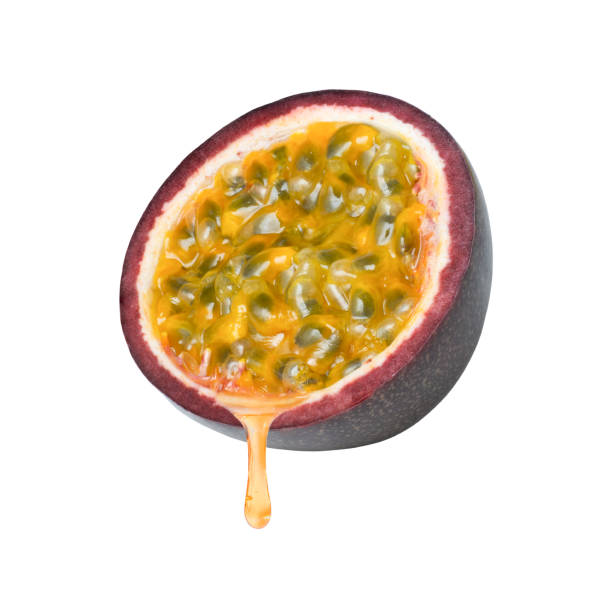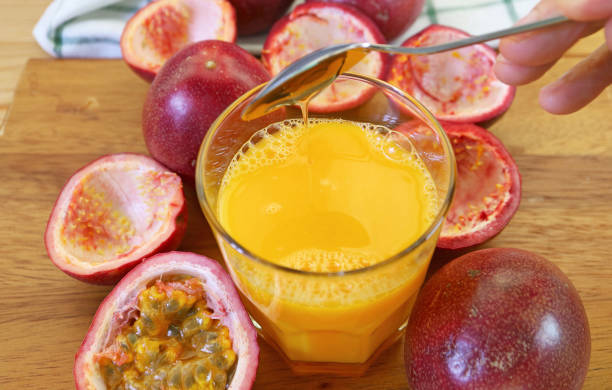Passion Fruit Unilever

Origins and Cultural Significance
The passion fruit has a rich history. It originated in Brazil and was first described in 1560 by a Portuguese colonist. Spanish and Portuguese colonists spread it from Brazil to other regions of South America and Central America. It eventually reached the Caribbean, Africa, Asia, and Australia.
Passion fruit goes by many names in different cultures. It’s known as lilikoi in Hawaii, granadilla in Spanish speaking countries, and maracuya in Brazil. This exotic fruit is intertwined with local customs. The flower is used to decorate religious floats in Peru. A passion fruit syrup called grenadine features in Caribbean cuisines.
Varieties of Passion Fruit
There are over 500 varieties of passion fruit. The main commercial cultivars are:
- Yellow Passion Fruit – Has a yellow smooth skin when ripe. This is the most common variety. Its tart, tangy pulp has a tropical aroma.
- Purple Passion Fruit – Has a dark purple wrinkled skin when ripe. It has a sweeter, less acidic flavor. The pulp has a jelly-like consistency.
- Sweet Granadilla – This variant has a thin brittle shell that cracks when ripe. Its pulp tastes like pineapple and banana.
- Giant Granadilla – The largest species, with giant orange fruit that can grow over a foot long. Its mellow flavor has hints of mango.
Cultivation and Harvesting
How Passion Fruit Grows?
Passion fruit thrives in tropical and subtropical climates. It needs consistent warmth, lots of sunshine, and frequent rainfall to flourish. Passion fruit vines can grow over 15 feet long. The vines climb trellises or other structures using tendrils.
Flowers bloom in autumn or early winter. Pollination is facilitated by bees and other insects. After pollination, egg-shaped fruit develop over 2-3 months. When ripe, the fruit falls to the ground.
The Best Season for Passion Fruit
The peak passion fruit season varies by location:
- Australia: January to March
- Brazil: April to June
- Ecuador: September to November
- United States (California, Florida): October to January
For the freshest, sweetest passion fruit, buy it when it’s in season locally. The skin should be plump, smooth, and have a deep color. Avoid bruised or wrinkled fruit.
Nutritional Powerhouse
The Nutritional Profile of Passion Fruit
| Nutrient | Per 100g | %Daily Value |
| Calories | 97 | 5% |
| Carbs | 24g | 8% |
| Fiber | 10g | 38% |
| Vitamin C | 30mg | 50% |
| Iron | 1.6mg | 9% |
| Potassium | 348mg | 7% |
Passion fruit is low in calories but high in essential vitamins and minerals. It’s an excellent source of fiber, vitamin C, potassium, and iron. The seeds provide the most fiber and protein.
Health Benefits Explored
The unique nutrition profile of passion fruit provides some great health perks:
- Heart Health – The fiber, potassium, vitamin C and choline promote heart health by improving blood pressure and cholesterol.
- Immune Support – With 188% of your daily vitamin C in one cup, passion fruit is a tropical immunity booster.
- Digestive Regularity – The seeds and pulp contain insoluble fiber that aids digestion and relieves constipation.
- Blood Pressure – Passion fruit is a great source of potassium, which helps manage sodium levels for healthy blood pressure.
Preparing and Enjoying Passion Fruit

Selecting and Storing Passion Fruit
When buying passion fruit, choose plump, heavy fruits without blemishes. Light rinkling indicates ripeness. Store ripe fruit in a paper bag in the fridge for 1-2 weeks. Let underripe fruit ripen at room temp before refrigerating.
To tell if it’s ripe, gently squeeze – ripe fruit feels slightly soft. Avoid fruits with cracked, leaking skin.
How to Cut Passion Fruit?
Cutting open passion fruit takes finesse. Follow these steps:
- Wash thoroughly and pat dry.
- Place the fruit on a cutting board. Hold it firmly.
- Using a sharp knife, slice straight through the middle.
- Scoop out the pulp and seeds with a spoon.
- Strain out the seeds if desired. Enjoy the pulp as-is or use it in recipes.
- Consume the seeds for extra fiber and crunch.
Culinary Adventures with Passion Fruit
Recipes for Every Occasion
Passion fruit transcends meals, bringing its vibrant tropical essence to breakfasts, lunches, dinners, and desserts. Try it in these delicious recipes:
- Passion Fruit Mint Smoothie
- Kale Salad with Passion Fruit Vinaigrette
- Coconut Rice Pudding with Passion Fruit
- Passion Fruit Sorbet
Passion Fruit in Modern Cuisine
Creative chefs are using passion fruit in innovative ways:
- Passion fruit hot sauce – Adds fruity heat.
- Passion fruit barbecue sauce – For sweet and tangy ribs.
- Passion fruit cream cheese – As a bagel topping.
- Passion fruit mixed drinks – From martinis to margaritas.
Beyond the Kitchen
Passion Fruit in Beverages and Cocktails
The tangy taste of passion fruit shines in refreshing beverages like:
- Passion fruit iced tea
- Sparkling passion fruit spritzers
- Passion fruit lemonade
- Passion fruit margaritas
- Passion fruit mojitos
- Passion fruit martinis
Pairing Passion Fruit with Other Flavors
Passion fruit interacts wonderfully with these complementary flavors:
- Tropical fruits – mango, pineapple, coconut, banana
- Citrus – lemon, lime
- Herbs – mint, basil
- Spices – ginger, cinnamon, vanilla
- Sweet flavors – honey, brown sugar
- Savory flavors – chicken, fish, pork
Health and Sustainability
Organic and Sustainable Choices
When possible, choose organic passion fruit. Conventional passion fruit is often imported and heavily sprayed with pesticides that harm farm workers and the environment. Buying local, organic passion fruit supports sustainable agriculture.
The Economic Impact of Passion Fruit Farming
Passion fruit farming provides income and food security for smallholder farmers in tropical regions. The juice industry creates local jobs. In Colombia and Kenya, passion fruit exports significantly contribute to economic growth. Sustainable passion fruit production uplifts local communities.
Practical Tips and Tricks
Dealing with Pesticides
To remove pesticide residue from non-organic passion fruit:
- Wash thoroughly in cold water.
- Soak in a vinegar solution for 20 minutes.
- Use a produce wash.
- Peel the skin, where pesticides accumulate.
Storing Passion Fruit: Fresh, Frozen, and Pureed
- Store fresh passion fruit in the fridge up to 2 weeks.
- Freeze scooped pulp in airtight bags for 6 months.
- Puree and freeze passion fruit pulp in ice cube trays for smoothies.
- Make passion fruit puree with seeds, freeze in jars up to 1 year.
Conclusion
Our passion fruit odyssey comes full circle from seed to fruit. We learned about passion fruit’s origins, varieties, growth, and peak seasonality. Passion fruit offers ample fiber, vitamin C, potassium, and other key nutrients. Its versatile tangy-sweet flavor elevates everything from salads to cocktails. Choose organic when possible and harness passion fruit’s antioxidant power. Let passion fruit add some tropical flair to your next meal or beverage.